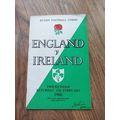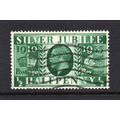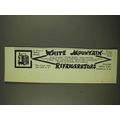Kolašin, Montenegro - general view - postcard c.1990s
- Condition : Used
- Dispatch : 2 Days
- Brand : None
- ID# : 182885298
- Quantity : 1 item
- Views : 144
- Location : United Kingdom

- Seller : justthebook (+1704)
- Barcode : None
- Start : Thu 27 Jun 2019 00:08:20 (BST)
- Close : Run Until Sold
- Remain : Run Until Sold
More Listings from This Seller view all
Seller's Description
- Postcard
- Picture / Image: Kolašin, Montenegro
- Publisher: Posta Crne Gore
- Postally used: no
- Stamp: n/a
- Postmark(s): n/a
- Sent to: n/a
- Notes / condition:
Please ask if you need any other information and I will do the best I can to answer.
Image may be low res for illustrative purposes - if you need a higher definition image then please contact me and I may be able to send one. No cards have been trimmed (unless stated).
------------------------------------------------
Postage & Packing:
Postage and packing charge should be showing for your location (contact if not sure).
No additional charges for more than one postcard. You can buy as many postcards from me as you like and you will just pay the fee above once. Please wait for combined invoice. (If buying postcards with other things such as books, please contact or wait for invoice before paying).
Payment Methods:
UK - PayPal, Cheque (from UK bank) or postal order
Outside UK: PayPal ONLY (unless otherwise stated) please. NO non-UK currency checks or money orders (sorry).
NOTE: All postcards are sent in brand new stiffened envelopes which I have bought for the task. These are specially made to protect postcards and you may be able to re-use them. In addition there are other costs to sending so the above charge is not just for the stamp!
I will give a full refund if you are not fully satisfied with the postcard.
----------------------------------------------
Text from the free encyclopedia WIKIPEDIA may appear below to give a little background information (internal links may not work) :
*************
Kolašin (Montenegrin Cyrillic: Колашин, pronounced [kɔlǎʃin]), is a town in northern Montenegro. It has a population of 2,989 (2003 census). Kolašin is the centre of Kolašin Municipality (population 9,949) and an unofficial centre of Morača region, named after Morača River.
The origin and the meaning of the word Kolašin is unknown. One hypothesis connects it to a vojvoda ("duke") named Kolašin who founded the settlement.[citation needed] Possibly the village of Kolašin from Sultan's Decree[when?] was the same Kolašin found in oral tradition and the settlement of vojvoda Kolašin.[citation needed]
Kolašin, fortress-settlement, was raised by the Turks in the middle of the 17th century in the namesake village in Nikšić district (nahiye). The village of Kolašin was first mentioned in the Sultan's Decree in 1565, by which the deceased Grand Duke Miloš was replaced by his son Todor. The Turkish town was named after the former village of Kolašin.
In 1651, Patriarch Gavrilo assigned Eparch of Zahumsko, the Eparchy of Nikšić, Plana, the Kolašinovićevs and the Morača to Basil of Ostrog. This document also, like the one from 1667, shows that the Orthodox Christian population of this region called the Kolašinovići, was organized in a recognized and respected tribal community of the Kolašinovićs. The historical science and sources recognize the surname Kolašinović. By all odds, the name was also derived, same as the name of the region, fortress – settlement and the tribe from the same source – the village of Kolašin.
By the decisions of the Congress of Berlin, in 1878, Kolašin officially became a part of Montenegro. This was preceded with fierce fighting with the Ottoman Empire over the Kolašin region. Constant battles had been waged by the members of Rovca, Drobnjaci, Morača, Vasojevići, Uskoci and other Montenegrin tribes to liberate this and other parts of the land from the Ottomans.
It was in 1798 when young Mina Radović, the son of tke Duke Radule, who had been killed by the Turks, ambushed and killed Hasanbeg Mekić, who had come to collect taxes, in the vicinity of Morača monastery. The attack had been arranged with the Montenegrin ruler Petar I Petrović-Njegoš. Mina Radović received the title of Duke and, in 1799, during the convention of the people's prominent representatives of Montenegro and the Hills held in Cetinje, he was nominated a member of the Court Administration of Montenegro and the Hills, in charge of judicial and administrative power. This meant that the Montenegrin government considered the Morača region to be a legitimate part of Montenegro.
There is a document written by Duke Miljan Vukov, who headed the Vasojević tribe in that battle, about the attack on Kolašin in 1858. It was the bloodiest battle in all of Montenegro: I participated in many a battle as ? Flag bearer, captain and warlord – he testified – but none of them had been so fierce and bloody as was the battle for taking Kolašin in 1858, which was, truly, one of the bloodiest that had ever happened in the vicinity of Montenegro.
The victory in that bloody battle established the new borders of Montenegro towards the regions that still remained under the Turkish rule. Fighting for liberation continued on the left bank of the Tara River around the Lower Kolašin villages. The Lipovo battle in 1872 is particularly remembered. There was no peace until the Congress of Berlin when Kolašin joined the principality and later the Kingdom of Yugoslavia created immediately after the World War I, all until it was disintegrated.
A year or two after the Congress of Berlin, the Kolašin brigade of Montenegro's people's army was formed. During the World War I, by the end of 1915 and in the beginning of 1916, it played a major part under the command of Serdar Janko Vukotić as part of the Sandžak army. In the famous Battle of Mojkovac, it successfully defended the gates of Mojkovac having repelled all the attack by much more numerous soldiers of the Austro-Hungarian army.
In the liberation wars between 1912 and 1918, the brigade lost more than 1000 soldiers and officers. In the Second World War, the Kolašin region again suffered hardship, heavy human casualties and destruction, including a Partisan massacre of over 350 civilians on Orthodox Christmas in January 1942. After the Italian capitulation, this part of Montenegro was free and so, on November 15 and 16, 1943, the First Session of the National Antifascist Council of Montenegro and Boka was held in Kolašin, attended by 544 delegates from all regions of Montenegro and 42 of them from Kolašin district, and its decisions were of critical importance for reconstruction and rebuilding of the Montenegrin state. In those days, Kolašin was the war capital of Montenegro.
The town of Kolašin changed hands several times between 1941 and 1944. It was bombarded 18 times by the Germans and Italians. Finally, on December 29, 1944, the town was conquered by the soldiers of the 5th Montenegrin Proletarian Brigade. In the national liberation struggle in the period of 1941–1945, more than 1400 soldiers from the Kolašin region took part and almost 400 died. Around 250 patriots lost their lives in various aggressors' torture chambers and on execution sites, and there were quite a lot of futile victims of fratricidal war.
Listing Information
| Listing Type | Gallery Listing |
| Listing ID# | 182885298 |
| Start Time | Thu 27 Jun 2019 00:08:20 (BST) |
| Close Time | Run Until Sold |
| Starting Bid | Fixed Price (no bidding) |
| Item Condition | Used |
| Bids | 0 |
| Views | 144 |
| Dispatch Time | 2 Days |
| Quantity | 1 |
| Location | United Kingdom |
| Auto Extend | No |




 for 1 item(s)
for 1 item(s)
















